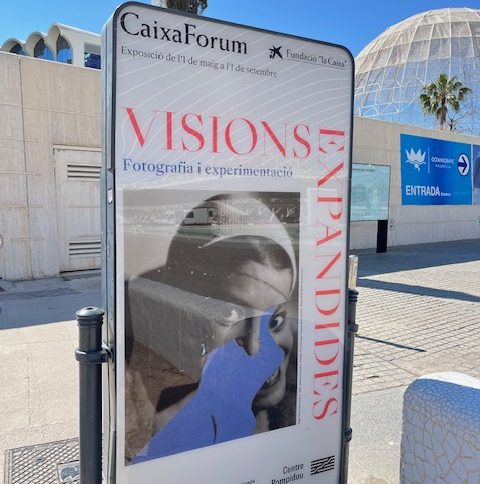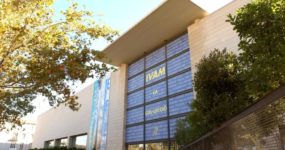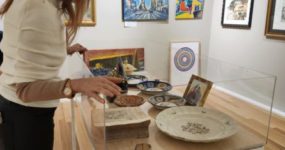Displayed at the Caixa Forum building within the impressive City of Arts and Science campus, the ‘Visiones Expandidas’ exhibition welcomes visitors from the 1st of May until the 1st of September, showcasing a wide range of remarkable experimental photography.
Organised and curated in collaboration with the Centre d’Art Georges Pompidou, this exhibition pulls together a selection of nearly 100 works from some of the most definitive names in experimental photography, such as William Klein, Man Ray, Ida Lansky, Sara Cwynar and Maurice Tabard. The exhibition is a photographic experimentation; it explores the ways in which photography has developed since the end of the 19th century through to today, how photography acts as a way of expressing the social and political concerns of the time, and it explores the limits of photographic language challenged by the Dadaists, Surrealists and Constructivists.
The exhibition does not follow a chronological order, but instead visitors follow a narrative journey, as ‘Visiones Expandidas’ is structured in six thematic sections, each one exploring the different ways in which photographers play with the medium of photography, and how its identity has evolved thorough time thanks to these technical experiments. It begins with the first section, entitled ‘Light’, and follows through to ‘Movement’, ‘Alterations’, ‘Vision on Trial’, ‘Recreating Worlds’, and ends with ‘Anatomies’.
A photograph displayed within the ‘Light’ section of the exhibition by Maurice Tabard, entitled ‘Arbre qui march’, 1949 shows how the method of solarisation – a technique systemised by Man Ray – is used to invert the colours in the photograph, displaying it as a negative image. Reminiscent of surrealism, Tabard’s images are subjected not only to solarisation, but they are also the products of overprints, which through the use of a double-exposure create a double-image effect. Following through to the ‘Movement’ section, this part focuses on visually representing the sensation of movement through recordings of light vibrations and montages. Works by Harold Eugene Edgerton reveal the use of stroboscopes and illuminated flairs to create these visuals.
The ‘Vision on Trial, and ‘Recreating Worlds’ sections highlight the importance of understanding that the camera is an extension of the human eye which increases the possibilities of vision. The camera does not only capture the way we see the world, but it has the ability to take reality and distort it. Digital transformations, changes to the scale and perspectives within an image, cut-outs and collages can be carried out, and elements can be added, subtracted and warped. These techniques are prevalent through the works of Noémie Goudal, Gérard Ifert and Georges Hugnet that are displayed in these sections.
The exhibition as a whole sparks conversations surrounding the ways in which art, science and the technological advancements in the 19th and 20th centuries all play together to create new meaning through alteration – ultimately reconfiguring reality through photography.
Tickets for the exhibition can be purchased on the Caixa Forum website here: https://caixaforum.org/es/valencia/p/visiones-expandidas_a164397574
Report by Jenny Grierson
Article copyright of 24/7 Valencia
Photos copyright Jenny Grierson/ 24/7 Valencia
CAIXA FORUM – L’ÀGORA (CITY OF ARTS AND SCIENCES)
C/ d’Eduardo Primo Yúfera, 1A
Quatre Carreres
46013
València
Related Post
This site uses Akismet to reduce spam. Learn how your comment data is processed.

























Leave a comment